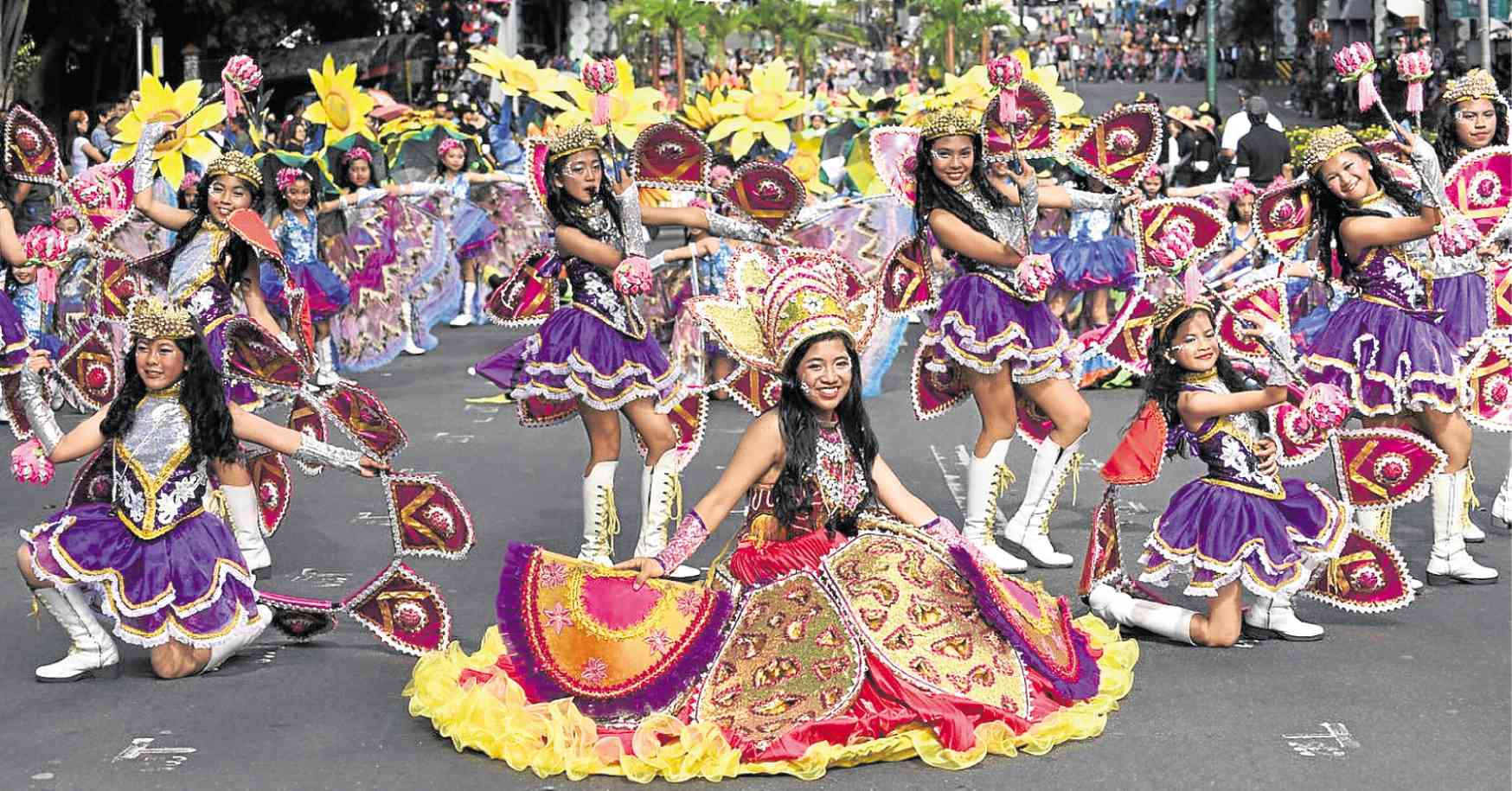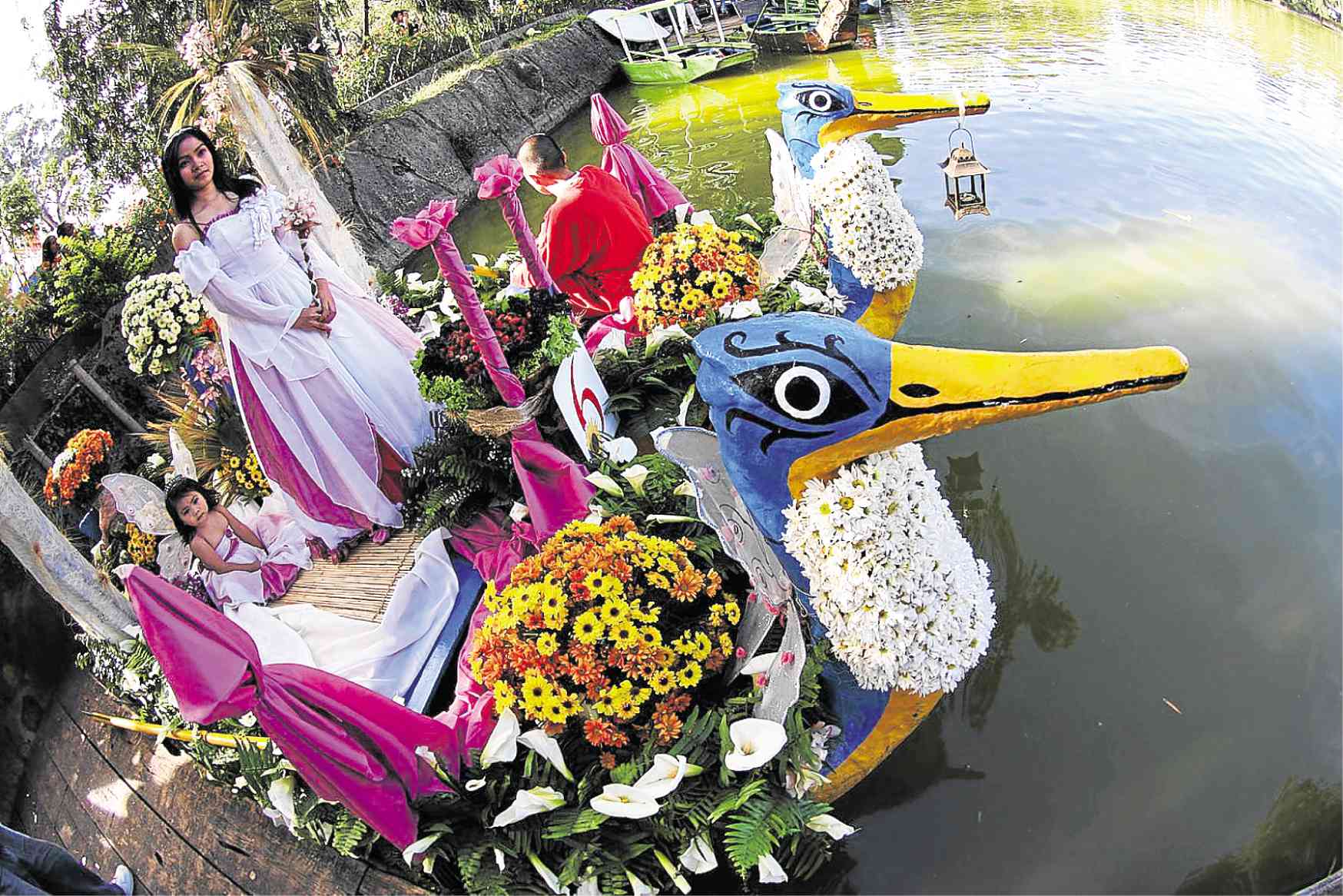Display of true flower power

Panagbenga is a celebration aimed at bringing back tourists to Baguio after the devastation of the 1990 earthquake. It also highlights Benguet’s cut flower industry, a source of livelihood for local farmers.
BAGUIO CITY — There is no other time and place in the country where one can see so many fresh and multicolored flowers in a single day than the annual Baguio Flower Festival’s float parade on the last Sunday of February when flower-decked floats roll down Session Road. (Editor’s Note: This year’s float parade is held today, the first Sunday of March).
Also known by the Kankanaey term “panagbenga” (season of blossoms or blossoming), the festival has become the summer capital’s grandest tourism event since it started in 1995 as a way to bring people back to the mountain city.
Most houses and buildings in Baguio were toppled by the 1990 earthquake, but its residents quickly rebuilt and Panagbenga gave visitors a new reason to drive up when it started the festival.
About 400,000 tourists, some traveling from many parts of the country, come to see how flowers can become beautiful artwork.
Last year, giant dumplings made of mums and daisies earned the Master Siomai float the top award in the big float category. In the small float category, Maybank’s magnificently arranged flowers formed a tiger, bagging the top prize it also won in 2017 when it used the same tiger motif.
About 90 percent of the participating floats are made up of fresh flowers, so designers source out fresh blooms from flower farms, mostly in the capital town of La Trinidad and the high-elevation towns of Atok and Tublay in Benguet.

STREET PERFORMERS Students in flower-inspired costumes wow the crowds during the Baguio Flower Festival’s street-dancing parade —PHOTOS BY EV ESPIRITU
Perfect climate
The province has the perfect climate for different flowers, grown either on open fields or greenhouses. In the last decade, La Trinidad, Atok and Tublay produced 25 million to 30 million metric tons, according to Benguet government data.
Temperate plants, such as roses and anthuriums, are harvested in La Trinidad and Tublay, while Atok’s cold weather creates spectacular hues to flowers, such as cabbage roses and alstroemerias.
In 1998, then Agriculture Secretary William Dar named Bahong in La Trinidad as the “Rose capital of the Philippines.” Half of the village’s 410-hectare area are flower farms, a huge chunk of which is dedicated to roses of various colors.
Cash crop
In Atok, a rising number of vegetable gardens are being converted into cut flower farms. In a town known for its almost frigid weather, the cut flower industry has not only altered the economic landscape but also the way of living of farmers there.
Municipal agriculturist Cherry Sano said high-value cut flowers were introduced in Atok in the early 2000s by the Jaime V. Ongpin Foundation. The town began developing greenhouses to grow carnation.

FLORAL BOAT In the 2016 festival, boats adorned with flowers were featured during a fluvial parade at Burnham Lake.
“Farmers realized it was a cash crop and they started segregating parts of their vegetable farms for flowers. Others completely shifted [to flower gardening],” Sano said.
By mid-2010, the cut flower industry became a multimillion-peso industry, she added.
Farmers also formed associations and cooperatives to sustain a big demand in Metro Manila and other parts of the country. Flowers are packed in crates and Styrofoam boxes to preserve shelf life and are transported in large trucks straight to Metro Manila.
Dangwa stalls
Others, like Benguet Fresh Multipurpose Cooperative, put up their own stalls at the old Dangwa bus station in Sampaloc, Manila, where flowers are sold to florists.
Other farmers have experimented with different varieties, said the spouses Leonardo and Mellanie Ganayan, one of the pioneering flower farmers in Atok. They have supplied winning floral float makers during the Panagbenga festival.
The Ganayans have capitalized on Atok’s near freezing temperature and are the only supplier of cabbage roses used for parties, including those held in Malacañang.
Imported from Japan, cabbage roses only achieve the vibrant colors florists seek if grown below 10 degrees Celsius, a temperature common in Atok from November to February.
The Ganayan farm, Northern Blossom, located at Sitio Sayangan in Barangay Paoay, has become a tourist attraction because of the cabbage roses, luring visitors as far as Compostela Valley.
Flower growing used to be a “sideline” among farmers until the early 2000s, Sano said.
Women harvested wild flowers, such as daisies and gladiolas, from the mountains or picked them manually from the skirts of vegetable farms.

THEME Companies and groups joining the float parade choose themes and subjects to feature during the parade, like this float with an “angel” playing the harp. —EV ESPIRITU
The gathered blossoms would be wrapped in cardboard or plastic sacks and sent to Baguio via Dangwa buses.
The flowers were sold in shops in Baguio while many were sent to Metro Manila, where a middleman would sell them to retail shops in Dangwa.
Planting materials
The middleman, a town mate, would come up to Benguet every weekend or at the end of the month to pay the farmers.
“It was a small amount but it was enough to augment our kitchen needs while waiting for our vegetables to be harvested,” Sano said.
Farmers sourced out foreign plant materials by salvaging old ones thrown by big companies that put up greenhouses in Atok, said Apolinario Celo, who heads Mountain Blooms, the biggest group of flower growers in that town.
“Eventually, we were also able to learn techniques to plant them,” Celo said.
Like many farmers who shifted to flower growing, Celo said they were lured by the ease of growing blooms compared to vegetable gardening.
Vegetable farming requires a lot of physical work and takes at least three months to harvest, he said, adding that they often worry about the unstable prices of vegetables.
Cut flower farmers can harvest every weekend for at least three years, before replacing the mother plants.
“The demand never wanes, too,” Celo said.